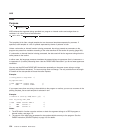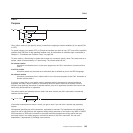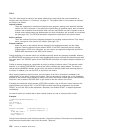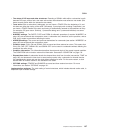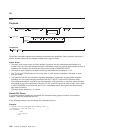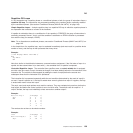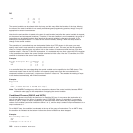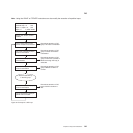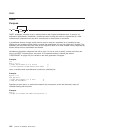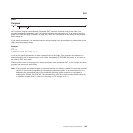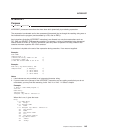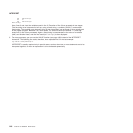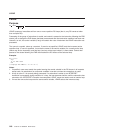
DROP
Purpose
DROP
name
(name)
;
DROP “unassigns” variables, that is, restores them to their original uninitialized state. If name is not
enclosed in parentheses, it identifies a variable you want to drop and must be a symbol that is a valid
variable name, separated from any other name by one or more blanks or comments.
If parentheses enclose a single name, then its value is used as a subsidiary list of variables to drop.
(Blanks are not necessary either inside or outside the parentheses, but you can add them if desired.) This
subsidiary list must follow the same rules as the original list (that is, be valid variable names, separated by
blanks) except that no parentheses are allowed.
Variables are dropped in sequence from left to right. It is not an error to specify a name more than one
time or to DROP a variable that is not known. If an exposed variable is named (see section
“PROCEDURE” on page 155), the variable in the older generation is dropped.
Example:
j=4
Drop a z.3 z.j
/* Drops the variables: A, Z.3, and Z.4 */
/* so that reference to them returns their names. */
Here, a variable name in parentheses is used as a subsidiary list.
Example:
mylist='c d e'
drop (mylist) f
/* Drops the variables C, D, E, and F */
/* Does not drop MYLIST */
Specifying a stem (that is, a symbol that contains only one period, as the last character), drops all
variables starting with that stem.
Example:
Drop z.
/* Drops all variables with names starting with Z. */
DROP
142
CICS TS for VSE/ESA: REXX Guide



